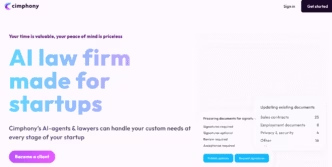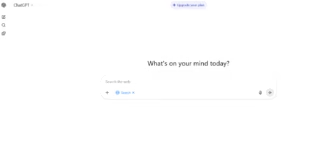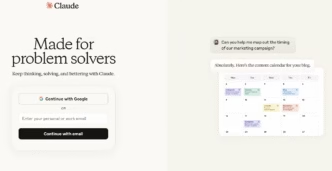Explore Vantage Discovery Generative AI-driven insights for smarter decisions. Unlock data-driven strategies & competitive intelligence in seconds. Learn more!
Vantage Discovery 🤝🔍Generative AI
Think of Vantage Discovery as the brain that makes product search feel intuitive instead of frustrating — the tech that understands what shoppers mean, not just what they type. It blends AI embeddings with large language models to fuel smarter search and personalized discovery, and it’s now part of Shopify’s stack after a 2025 acquisition.
What Vantage Discovery is
Vantage Discovery built an AI-powered search and content discovery platform that layers semantic understanding and personalization over traditional keyword search. In plain words: it helps users find the right thing faster and more naturally, across different datasets and customer contexts.
The team emphasized differentiated ranking algorithms, efficient systems architecture, and a clean interface so stores can deliver generative-AI search and tailored recommendations without heavyweight customization1.
In March 2025, Shopify acquired Vantage Discovery, signaling a big bet that better search equals better conversion. The company’s roots trace to engineers with Pinterest experience, bringing know-how in visual and personalized discovery to commerce.
Direct answer: Vantage Discovery is an AI semantic search and discovery platform, founded in 2023 and acquired by Shopify in March 2025.
Timeline and origin at a glance
Vantage Discovery was founded in 2023 and headquartered in San Francisco. It raised early funding in 2023–2024, including a Series A in June 2024, before being acquired by Shopify in March 2025. Founders include Nigel Daley and Lance Riedel, with Riedel serving as CEO.
Why this matters for ecommerce
Shop search has long lagged behind user expectations. Shoppers type “flowy blue dress for a spring wedding” and get random tees — then bounce. Vantage tackles this with semantic search that interprets intent, learns from engagement, and surfaces the most relevant, high-converting products, reducing friction from first query to checkout. Shopify’s acquisition effectively brings this “smart discovery” capability into reach for everyday stores, not just retail giants.
How it works in practice
- Intent understanding: The system decodes natural language queries (“cozy winter loungewear under ₹2,000”) into actionable search signals beyond keywords.
- Embeddings + LLM reranking: Items and queries are embedded in vector space, then re-ranked with LLM-driven logic to favor relevance, quality, and conversion likelihood.
- Personalized discovery: It adapts to what users click, save, and buy, elevating products that match their tastes and session context.
- Generative help: The interface can guide with natural prompts and dynamically curated results, supporting both keyword and conversational flows.
Quick snapshot
| Attribute | Detail |
|---|---|
| Founded | 2023 |
| Headquarters | San Francisco, United States |
| What it does | AI semantic search and personalized discovery for products/content |
| Notable milestone | Acquired by Shopify in March 2025 |
| Founders and leadership | Founded by Nigel Daley and Lance Riedel; CEO Lance Riedel |
| Core approach | AI embeddings + LLMs, differentiated ranking, intuitive UI |
Who benefits and when to use it
- Stores and marketplaces:
- Signal: Users search often but don’t convert.
- Value: Lift findability, reduce zero-result queries, and increase average order value.
- Content catalogs and media:
- Signal: Deep archives with weak discovery.
- Value: Surface long-tail assets that match user intent.
- B2B catalogs:
- Signal: Complex SKUs and jargon.
- Value: Translate natural questions into precise results.
Implementation checklist (emoji edition)
- Define success: Set KPIs like containment rate, search-to-cart rate, zero-result rate, and dwell time on result pages. 🎯
- Map intents: List top 50 real queries, including messy, multi-attribute phrases (“lightweight, breathable running tee, XL”). 🗺️
- Enrich data: Tighten titles, attributes, synonyms, and handle colloquialisms (“chappals” vs “sandals”). 🧩
- Cold start strategy: Pre-rank by quality, availability, margin, and visuals; blend with semantic matches. ❄️➡️🔥
- Feedback loops: Capture clicks, saves, add-to-cart, return reasons; tune re-ranking accordingly. 🔁
- Guardrails: Penalize out-of-stock, enforce compliance filters, and cap repetition to avoid echo results. 🛡️
- Human handoff: Keep a manual override and “escalate to human” option for edge cases. 🧑🔧
Myths vs. reality
- Myth: “Semantic search replaces merchandising.”
- Reality: It augments it. You still set business rules, boost strategies, and brand guardrails.
- Myth: “LLMs guarantee accuracy.”
- Reality: Relevance depends on data quality, feedback loops, and evaluation.
- Myth: “One model fits all.”
- Reality: Tuning by catalog, audience, and seasonality is where gains compound.
Copy you can steal ✍️✨
- Homepage hero:
- “Find what you meant — not just what you typed. Smarter search that knows your style. 🔎✨”
- PLP microcopy:
- “Looking for ‘monsoon-ready sneakers under ₹2,500’? We’ve got you.” 🌧️👟
- Empty state:
- “No perfect match — yet. Try ‘lightweight rain jacket’ or remove a filter. We’re learning with you. 🤝”
Prompts to tune your assistant
- Data cleanup: “Rewrite these product titles to surface key attributes in 90 characters, with Indian English spelling.”
- Synonym map: “Generate synonyms and colloquial variants for these 30 apparel attributes common in India.”
- Ranking test: “Given these 12 results and this user intent, propose a re-ranked list and explain tradeoffs.”
If you’re on Shopify right now
- Short term: Improve attributes, synonyms, and on-site prompts; reduce zero-result queries with smart fallbacks.
- Mid term: Pilot AI semantic search on a subset of collections, measure search-to-cart delta, then roll out.
- Long term: Blend discovery into navigation (collections, recommendations, and editorial), not just the search bar.
Shopify’s move makes advanced discovery a first-class citizen in its ecosystem — expect deeper, native-level capabilities to spread across themes and apps after the acquisition.
Want me to tailor this into a brand voice guide, search UX wireframes, and a 90‑day rollout plan for your catalog size and audience in India? I can draft it in your tone with emoji and ready-to-ship copy.







